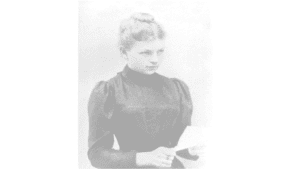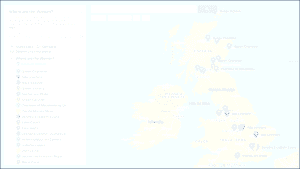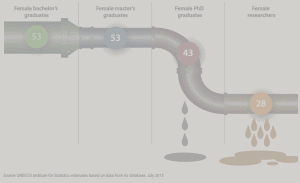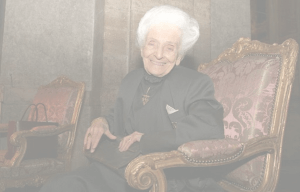Every February, we celebrate the International Day of Women and Girls in Science, a day to promote full and equal access to science and several research disciplines for women and girls around the world. However, the tokenisation of the few women that managed to succeed in male dominated fields is not enough, because it does not address the causes or consequences of this inequality.
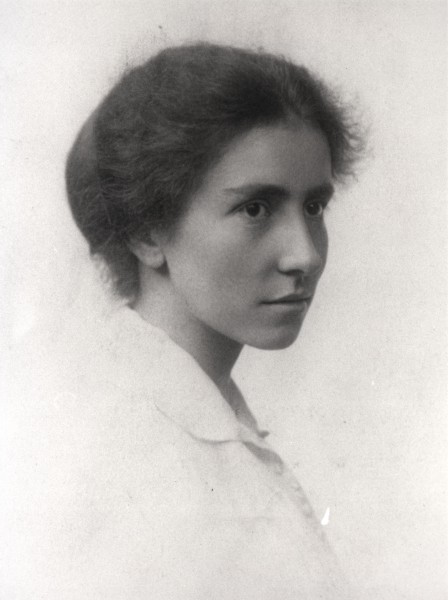
the first woman to hold a Chair of Archaeology at University of Cambridge. Image credit: Wikimedia.
Highlighting pioneering women in scientific disciplines is one of the most popular activities taking place whenever it is time to celebrate women’s contributions to science. It is a positive activity that, first, reminds us how some women have always been there, even at the time when scientific research was an eminently masculine enterprise (although, sadly this is still the case in some fields). Simultaneously, every time we learn about the work of a pioneering woman, we question why we had not been aware of their work before and hopefully something ‘clicks’ in our head, as we realise that the contributions of women are systematically ignored or downplayed [1,2] in comparison to those of their male counterparts. Both points -seeing that women have always been present and questioning why their presence has been ignored in our fields- are very important, and a lot of researchers are doing an incredible job drawing attention to women’s contributions in several fields. In archaeology, for example, the ‘Trowelblazers’ project is a wonderful tool to learn about pioneering women doing fieldwork, not only in archaeology, but also in geology and palaeontology all over the world [3]. A similar initiative is the ArqueólogAs project, which focuses on pioneering women in Spanish archaeology [4], or the Arqueo.feminismo project on Instagram [5], where they explain how feminist perspectives are being used in archaeology. Another fascinating project is PastWomen, where researchers tell us about the life of women in the past from an archaeological perspective [6]. However, having women doing archaeology is not just about reaching a quota of women (in fact, we might have a majority of female students at the moment) or about women breaking the glass ceiling (we have not done this yet, as most professors are still men), although both goals are absolutely right and should be prioritised in any discipline. The problems run deeper than that and are connected with the fact that our own society is not egalitarian for men and women. In archaeology, for example, there is research showing how gender influences the access to training, publication and job opportunities [7,8]. This is particularly
true in the case of fieldwork, since fieldwork is still perceived as a fundamentally masculine activity [9], while women are more often expected to work in labs and museums.
If social sciences aim to be relevant for society, we need to be reflexive, analysing our own discipline and biases. In this sense, it is possible to see how the presence of women in the discipline is not just about numbers, but about the kind of research that we do. In the case of archaeology, and with some exceptions, the majority of archaeologists, until quite recently, were privileged, wealthy European and North American men. And the research topics of the discipline used to reflect the interests of that demographic, thus focusing on issues such as technological change, political and economic organisation, or warfare. While there were exceptions, those were the kind of topics upon where most academic and scientific careers were built. This led to a discipline that, for a long time, was quite homogenous, both in terms of its practitioners and its research topics.
And what is the problem with homogeneity in a scientific discipline? To start with, it is unfair, as those who do not fit that homogeneous professional body are less likely to be accepted into it. But beyond that, the lack of diversity simply means that a discipline like archaeology will produce incomplete historical discourses, full of biases and without the capacity to attract the broader society. Archaeological discourses have ignored many significant parts of the societies they aimed to study because its researchers, all being similar, with similar life experiences and interests, used to look at the same topics in the societies they were studying [see clarification below in 10]. In archaeology, and in many other disciplines, we still have a long road ahead in terms of building a diverse discipline, which hopefully will help us uncover the past without projecting our own biases [11]. But thankfully, we are becoming more diverse and more reflexive every day
And with this diversification, we are now looking at so many new things that enrich our understandings of past societies. To finish here, celebrating pioneering women is important and beneficial; and so is promoting the participation of women and girls in science. But we need to go a step further, questioning why women and other collectives have been excluded, and how inclusivity and representation matter. Because if we don’t do it, in the case of Archaeology, then we are just researching the history of some of the people in the past.
By Guillermo Díaz de Liaño del Valle, @Díaz de Liaño del Valle. PhD student in Archaeology at the University of Edinburgh.
The author of this post included the following acknowledgements:
Special thanks to María Coto for the inspiration for this post, and for the improvements she suggested. All the flaws and shortcomings in the final text remain my responsibility alone.
More information:
- Blog entry “Believe in yourself. Believe in your science” published at the SRUK Blog, by Margarita Segovia Roldán.
- Blog entry “Women in science: Rita Levi-Montalcini” published at the SRUK Blog, by Margarita Segovia Roldán.
- Blog “Trowel Blazers”, access here.
- Project “ArqueólogAs” (source in Spanish). You can access their website (here) and their Instagram account @proyecto_arqueologas.
- Instagram account @arqueo.feminismo.
- Blog “Past Women” (source in Spanish), access here.
- Overholtzer, L., & Jalbert, C. (2021).
- Laura E. Heath-Stout (2020).
- Moser, S. (2007).
- In-text clarification made by the author of the post:
To explain this, something called ‘standpoint theory’, developed by feminist scholars since the 1980s, can come in handy. Standpoint theories explain how those in subordinated positions have more capacity to see society the way it really is, because they enjoy less privileges and thus cannot afford to take many things for granted. There are many examples that can illustrate the validity of standpoint theories in archaeology, as the diversification of the field is having profound effects on the type of things we are researching, and the kind of historical discourses that we are producing. It is not a coincidence that topics such as ‘maintenance activities’ (basically, all the things that need to be done for a society to work on daily basis, such as taking care of kids and the elderly, making clothes, processing and cooking food, etc) were understudied until the development of feminist archaeology to Academia. The same logic applies to gender diversity in the past; it remained understudied until Queer Archaeology developed. - Booklet in which some of the gender stereotypes that still pervade archaeological discourses are tackled. Freely available here.

